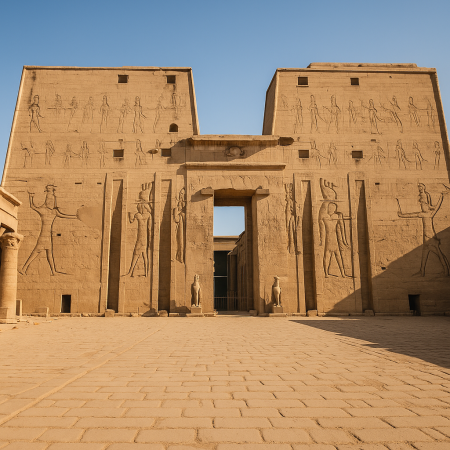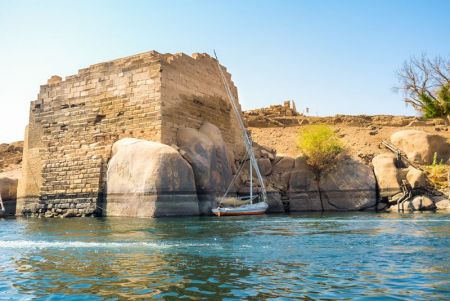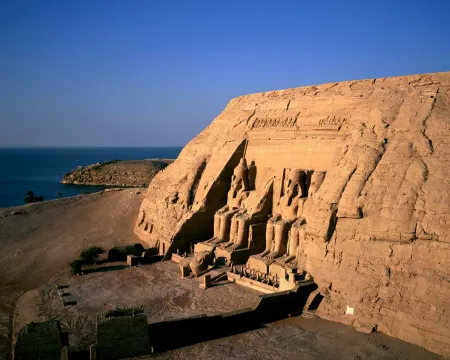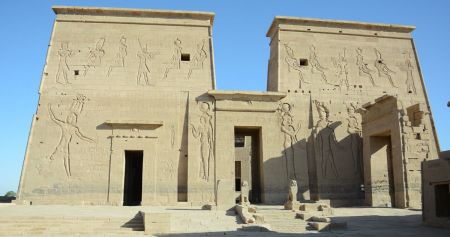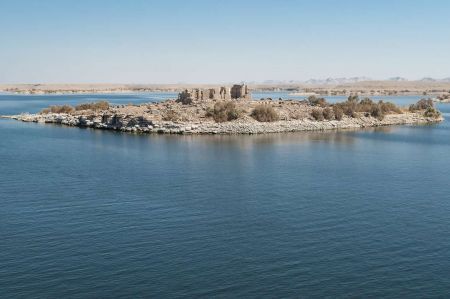The High Dam of Egypt : A Monument of Modern Engineering
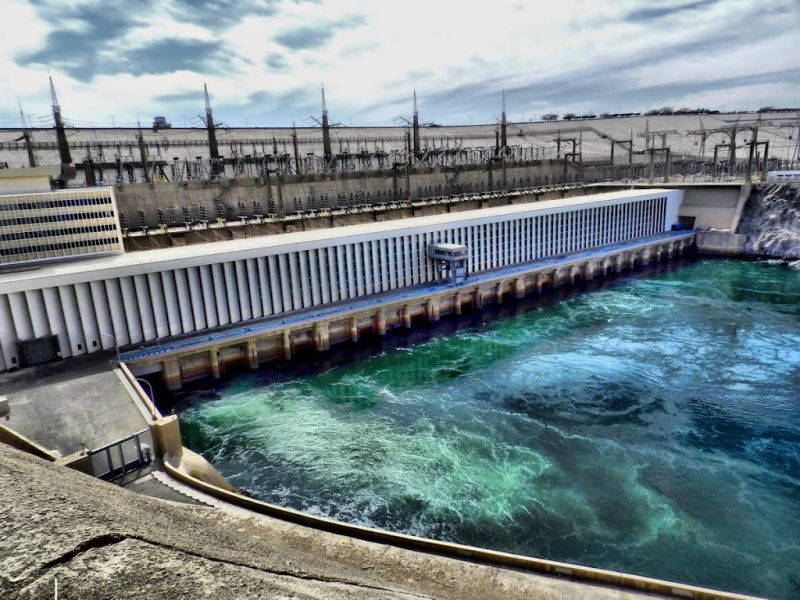
Rising boldly on the southern edge of Aswan, the High Dam of Egypt—commonly known as the Aswan High Dam—stands as one of the 20th century’s most monumental engineering achievements. Completed in 1970, this colossal structure reshaped Egypt’s economy, geography, and future. Designed to tame the mighty Nile, the High Dam has transformed the country’s agricultural system, generated vital hydroelectric power, and safeguarded millions from the devastating effects of annual floods.
Unlike ancient temples and pyramids built for the afterlife, the Aswan High Dam was built for life itself—ensuring water availability, food security, and energy independence for generations. This modern marvel is not just a dam; it's a symbol of resilience, national identity, and a turning point in Egypt's post-colonial era.
Stretching nearly 4 kilometers long and towering 111 meters high, the High Dam in Aswan is an engineering colossus that controls one of the world’s longest and most unpredictable rivers. Behind it lies Lake Nasser, one of the largest man-made lakes on the planet, stretching 500 km southward into Sudan. The story of the High Dam is as much about ambition and innovation as it is about control, development, and survival in a desert nation dependent on a single river.
The Historical Context of the Aswan High Dam
Egypt’s Battle Against the Nile’s Fury
For millennia, Egypt’s destiny was tied to the Nile. The river’s unpredictable floods could bring fertility or disaster. While ancient irrigation systems helped manage water levels, Egypt needed a permanent, reliable solution to regulate the Nile’s annual cycle.
Nasser’s National Project
President Gamal Abdel Nasser envisioned the Aswan High Dam as the cornerstone of his economic and social development plan. Launched in 1960, the dam’s construction was a national mission, supported by Soviet engineering and funding after Western nations withdrew their support. This marked a pivotal moment in Egypt’s Cold War-era alliances and its assertion of sovereignty over its resources.
Completion and Inauguration
The dam was completed in 1970 and inaugurated in 1971. It represented a bold leap forward in infrastructure and positioned Egypt as a modern force in water management and hydroelectric production.
Engineering Marvel of the Aswan High Dam
Technical Specifications
The Aswan High Dam is a rockfill dam with a clay core. It stretches 3,830 meters (2.4 miles) across the Nile, stands 111 meters high, and has a base width of nearly 1 kilometer. It holds back the immense waters of Lake Nasser, which has a total storage capacity of 132 billion cubic meters.
Hydroelectric Power Generation
At the dam’s core is a hydroelectric plant that houses 12 turbines. Together, they generate over 2.1 gigawatts of electricity—once supplying up to half of Egypt’s electricity needs. While that share has decreased with population growth, the Aswan High Dam electricity production remains a vital component of Egypt’s national grid.
Regulating Water Supply Year-Round
The dam allows Egypt to store water during flood seasons and release it during dry periods, ensuring consistent agricultural irrigation. This dramatically increased Egypt’s arable land and allowed for year-round farming, a revolution for a country long dependent on the Nile’s whims.
Step aboard a comfortable ship for an unforgettable Egypt Nile Cruises
Environmental and Social Impacts of the High Dam
Creation of Lake Nasser
The creation of Lake Nasser flooded a massive area, submerging ancient Nubian villages and archaeological treasures. Over 90,000 Nubians were displaced and resettled elsewhere. Though controversial, the lake now supports fishing industries and acts as a strategic water reserve.
Loss of Nutrient-Rich Silt
One of the downsides of the High Dam was the reduction in nutrient-rich silt reaching the Nile Delta. This required increased reliance on chemical fertilizers, changing the nature of Egyptian agriculture and impacting the fertility of traditional farming lands.
Environmental Concerns
The High Dam altered the region’s natural ecosystem, affecting fish migration and encouraging the spread of water-borne diseases like schistosomiasis in stagnant areas. Efforts have since been made to mitigate these effects through modern irrigation and environmental planning.
Economic and Agricultural Benefits
A Green Revolution for Egypt
By controlling water flow, the Aswan High Dam allowed for large-scale irrigation, transforming previously barren desert into fertile farmland. It enabled the cultivation of multiple crops annually and improved food security for millions.
Industrial Development Boost
With abundant and reliable hydroelectric power, the dam spurred Egypt’s industrialization, powering factories, refineries, and cities across the country. It laid the foundation for modern infrastructure and urban expansion, particularly in Upper Egypt.
Tourism and Legacy
A Tourist Destination and National Landmark
The Aswan High Dam Egypt is now a popular tourist attraction. Visitors walk along its summit, marvel at the panoramic views of Lake Nasser, and visit nearby attractions like the Unfinished Obelisk, Philae Temple, and the Kalabsha Temple complex.
A Symbol of Sovereignty and Modernization
More than a feat of engineering, the dam symbolizes Egypt’s determination to control its future. It was a central pillar of Nasser’s nationalist vision and remains a testament to what modern Egypt can achieve through unity and purpose.
Planning Your Visit to the Aswan High Dam
How to Get There
Located just 17 km south of Aswan, the dam is easily accessible by car or taxi. Guided tours often combine the High Dam with nearby historical sites, making it a half-day excursion.
What to Expect
Visitors can explore the dam’s observation points, turbine gallery (by special arrangement), and the panoramic lookout over Lake Nasser. Interpretive signs and guides explain the dam’s construction and impact.
Nearby Attractions
-
Philae Temple: A stunning Ptolemaic temple relocated to Agilkia Island
-
Kalabsha Temple: A Nubian temple rescued from flooding
-
Nubian Museum: Offers insight into the culture of displaced Nubian communities
Frequently Asked Questions About the Aswan High Dam
What is the purpose of the Aswan High Dam?
The primary purposes are water regulation, hydroelectric power generation, and flood control. It supports agriculture and provides electricity to millions of Egyptians.
How is the Aswan High Dam different from the Old Aswan Dam?
The Old Aswan Dam, built in 1902, is smaller and located downstream. The High Dam, built in the 1960s, is much larger and more powerful, creating Lake Nasser and generating hydroelectricity.
Can tourists visit the Aswan High Dam?
Yes, it’s open to visitors year-round. Guided tours are available, and the dam offers spectacular views of the Nile River and Lake Nasser.
What is Lake Nasser used for?
Lake Nasser provides long-term water storage, supports fisheries, and helps manage seasonal variations in Nile flow. It also supplies water to irrigation systems throughout Egypt.
How does the Aswan High Dam affect agriculture in Egypt?
It enables year-round farming, expands arable land, and ensures reliable irrigation. However, it also reduced natural silt deposits, leading to greater fertilizer use.
Final Thoughts: The Aswan High Dam as a Pillar of Modern Egypt
The High Dam of Egypt is more than a structure—it's a national symbol of progress, ingenuity, and survival. While it came with trade-offs, its contributions to electricity, agriculture, and flood control have profoundly shaped modern Egyptian life. For engineers, historians, and travelers alike, it offers a glimpse into a moment when Egypt took charge of its future—one megaproject at a time.



